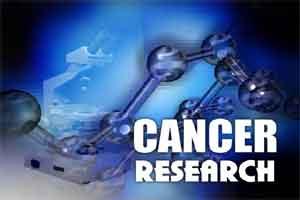- Home
- Medical news & Guidelines
- Anesthesiology
- Cardiology and CTVS
- Critical Care
- Dentistry
- Dermatology
- Diabetes and Endocrinology
- ENT
- Gastroenterology
- Medicine
- Nephrology
- Neurology
- Obstretics-Gynaecology
- Oncology
- Ophthalmology
- Orthopaedics
- Pediatrics-Neonatology
- Psychiatry
- Pulmonology
- Radiology
- Surgery
- Urology
- Laboratory Medicine
- Diet
- Nursing
- Paramedical
- Physiotherapy
- Health news
- Fact Check
- Bone Health Fact Check
- Brain Health Fact Check
- Cancer Related Fact Check
- Child Care Fact Check
- Dental and oral health fact check
- Diabetes and metabolic health fact check
- Diet and Nutrition Fact Check
- Eye and ENT Care Fact Check
- Fitness fact check
- Gut health fact check
- Heart health fact check
- Kidney health fact check
- Medical education fact check
- Men's health fact check
- Respiratory fact check
- Skin and hair care fact check
- Vaccine and Immunization fact check
- Women's health fact check
- AYUSH
- State News
- Andaman and Nicobar Islands
- Andhra Pradesh
- Arunachal Pradesh
- Assam
- Bihar
- Chandigarh
- Chattisgarh
- Dadra and Nagar Haveli
- Daman and Diu
- Delhi
- Goa
- Gujarat
- Haryana
- Himachal Pradesh
- Jammu & Kashmir
- Jharkhand
- Karnataka
- Kerala
- Ladakh
- Lakshadweep
- Madhya Pradesh
- Maharashtra
- Manipur
- Meghalaya
- Mizoram
- Nagaland
- Odisha
- Puducherry
- Punjab
- Rajasthan
- Sikkim
- Tamil Nadu
- Telangana
- Tripura
- Uttar Pradesh
- Uttrakhand
- West Bengal
- Medical Education
- Industry
World's largest database for cancer drug discovery goes 3D

London: Scientists have revolutionised the world's largest database for cancer drug discovery by adding 3D structures of faulty proteins and maps of cancer's communication networks, paving the way for more effective treatments.
The new version of canSAR database uses artificial intelligence to identify nooks and crannies on the surface of faulty cancer-causing molecules, as a key step in designing new drugs to block them.
The database has already collated billions of experimental measurements mapping the actions of one million drugs and chemicals on human proteins, and has combined these data with genetic information and results from clinical trials, researchers said.
It allows scientists to identify communication lines that can be intercepted within tumour cells, opening up potential new approaches for cancer treatment.
The growing database now holds the 3D structures of almost three million cavities on the surface of nearly 110,000 molecules.
"Our database is constantly growing with information and is the largest of its kind - with more than 140,000 users from over 175 countries," said Bissan Al-Lazikani, from The Institute of Cancer Research in London, who led the team that developed canSAR.
"And we regularly develop new artificial intelligence technologies that help scientists make predictions and design experiments," Al-Lazikani said.
"Our aim is that cancer scientists will be armed with the data they need to carry out life-saving research into the most exciting drugs of the future," he said.
"Scientists need to find all the information there is about a faulty gene or protein to understand whether a new drug might work," Al-Lazikani said.
"These data are vast and scattered, but the canSAR database brings them together and adds value by identifying hidden links and presenting the key information easily," he said.
"The canSAR database is an important part of the overall drive to use Big Data approaches to understand and treat cancer more effectively," said Paul Workman, chief executive of The Institute of Cancer Research.
"CanSAR is a massively powerful resource that's used globally by researchers to gain rapid and easy to use access to a huge wealth of integrated knowledge in biology, chemistry and cancer medicine," he said.
The new version of canSAR database uses artificial intelligence to identify nooks and crannies on the surface of faulty cancer-causing molecules, as a key step in designing new drugs to block them.
The database has already collated billions of experimental measurements mapping the actions of one million drugs and chemicals on human proteins, and has combined these data with genetic information and results from clinical trials, researchers said.
It allows scientists to identify communication lines that can be intercepted within tumour cells, opening up potential new approaches for cancer treatment.
The growing database now holds the 3D structures of almost three million cavities on the surface of nearly 110,000 molecules.
"Our database is constantly growing with information and is the largest of its kind - with more than 140,000 users from over 175 countries," said Bissan Al-Lazikani, from The Institute of Cancer Research in London, who led the team that developed canSAR.
"And we regularly develop new artificial intelligence technologies that help scientists make predictions and design experiments," Al-Lazikani said.
"Our aim is that cancer scientists will be armed with the data they need to carry out life-saving research into the most exciting drugs of the future," he said.
"Scientists need to find all the information there is about a faulty gene or protein to understand whether a new drug might work," Al-Lazikani said.
"These data are vast and scattered, but the canSAR database brings them together and adds value by identifying hidden links and presenting the key information easily," he said.
"The canSAR database is an important part of the overall drive to use Big Data approaches to understand and treat cancer more effectively," said Paul Workman, chief executive of The Institute of Cancer Research.
"CanSAR is a massively powerful resource that's used globally by researchers to gain rapid and easy to use access to a huge wealth of integrated knowledge in biology, chemistry and cancer medicine," he said.
Next Story


